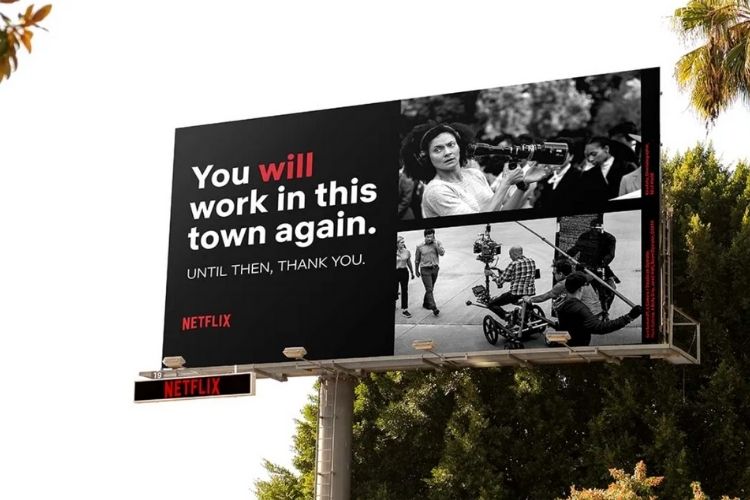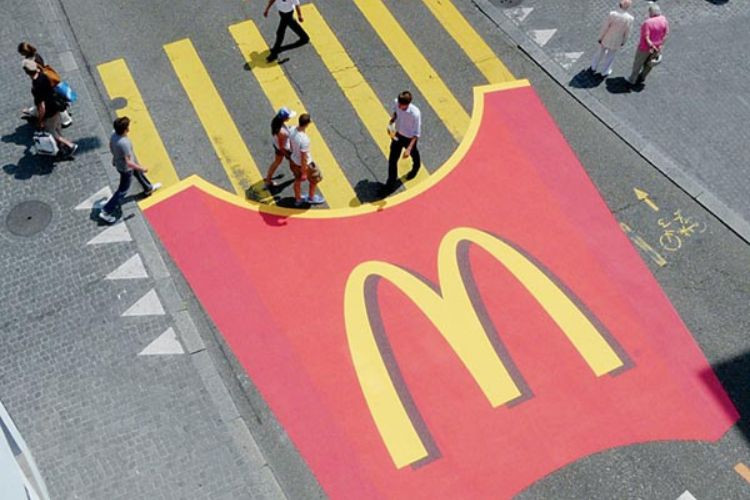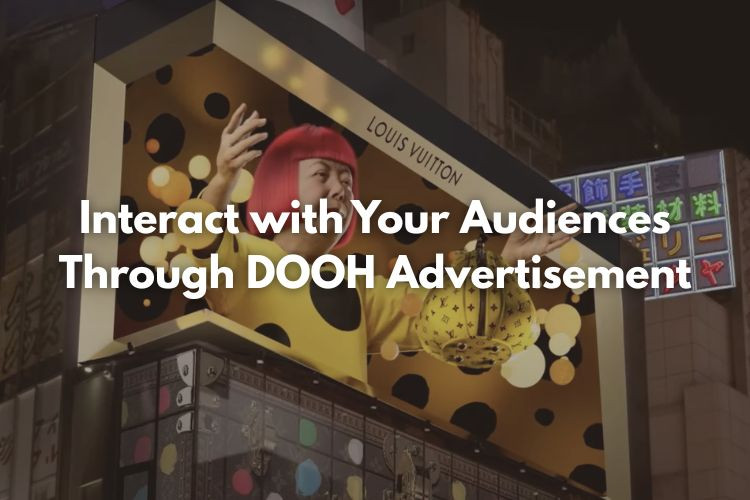The Psychology of Viral Billboards: What Makes Certain Ads Instantly Captivate Audiences

In a world saturated with visual stimuli, the battle for attention is fierce. We are constantly filtering out information, a cognitive process known as "banner blindness," where our brains automatically ignore what looks like an ad. This poses a unique challenge for out-of-home (OOH) advertising: how does a static billboard, in a fixed location, break through this psychological barrier and command notice?
The answer lies not just in art direction, but in a deep understanding of human psychology. A successful billboard is a masterclass in cognitive science, leveraging fundamental principles of how our brains process information, form memories, and trigger emotions. This article delves into the fascinating psychology behind what makes people notice a billboard, exploring the journey from a fleeting glance to a lasting memory.
Part 1: The First Hurdle - Capturing the Glance (The Sensory & Perceptual Stage)
Before a message can be understood, it must be seen. This initial capture happens in a split second and is governed by primal, sensory-driven processes.
1. The Principle of Salience: Standing Out from the Visual Noise
Salience refers to the quality of being particularly noticeable or important. A salient billboard is one that stands out from its environment due to its inherent properties.
-
Color and Contrast: Our visual system is hardwired to detect contrast. A billboard that uses high-contrast color combinations (e.g., black and yellow, white and deep blue) will be processed faster by the brain than one with muted, similar tones. Bright, saturated colors can trigger a stronger neural response, but they must be used strategically to avoid appearing garish. The key is to contrast with the natural environment—a vibrant, warm-colored ad will pop against a grey sky or a concrete jungle.
-
Size and Scale: This is a straightforward principle of physics and perception. A larger billboard occupies more of the visual field, making it inherently more difficult to ignore. The sheer scale commands a presence that smaller formats cannot achieve, creating a sense of importance and authority.
-
Motion and Novelty (The DOOH Advantage): With the rise of Digital Out-of-Home (DOOH), motion has become a powerful tool. The human eye is instinctively drawn to movement. A subtle animation, a changing scene, or flowing text can pull attention away from static surroundings. Similarly, novel or unexpected elements—a unique shape, a 3D installation, or an unconventional material—disrupt visual patterns and force a "double-take."
2. Gestalt Principles: How the Brain Organizes Chaos
Our brains are not cameras; they are pattern-recognition machines. The Gestalt psychologists identified principles that describe how we automatically group individual elements into whole forms. A billboard that aligns with these principles is processed more easily and quickly.
-
Figure-Ground Relationship: This is the foundation. The brain must instantly separate the main subject (the figure) from the background. A strong, clear figure-ground relationship makes the message legible at a glance. A cluttered background or a confusing overlap between subject and backdrop creates cognitive strain, causing the viewer to look away.
-
Principle of Proximity: Elements that are close together are perceived as related. By grouping the brand logo, headline, and visual closely, the brain understands they are part of a single message.
-
Principle of Simplicity (Pragnänz): People perceive and interpret ambiguous or complex images in the simplest form possible. A clean, uncluttered layout with a single, focused message is cognitively "cheap" to process. A complex, information-dense billboard is "expensive" and is often skipped over.
Part 2: Holding the Gaze - The Cognitive Processing Stage
Once the glance is captured, the billboard has a precious few seconds to engage the viewer's conscious mind. This is where cognition and memory come into play.
3. The Cognitive Load Theory: The 3-Second Rule
A person driving past a billboard at high speed may have only 3-5 seconds to see, read, and comprehend it. Cognitive Load Theory suggests that our working memory has a very limited capacity.
-
Brevity is King: The most effective billboards feature a succinct message—often just 3-7 words. A long paragraph of text is impossible to digest and will be immediately abandoned. The message must be a "cognitive snack," not a full-course meal.
-
Large, Legible Fonts: Typography is not just an aesthetic choice; it's a usability imperative. A clear, bold, and large font reduces the cognitive effort required to decode the words, freeing up mental resources to absorb the message itself.
-
The Power of Familiarity: Using a well-established brand logo, character, or color scheme taps into the viewer's existing memory structures. Recognizing a familiar brand is instantaneous and requires almost no cognitive effort, creating an immediate anchor of trust and understanding.
4. Storytelling and Pattern Interruption: Engaging the Narrative Brain
Humans are natural storytellers. We don't just see; we interpret.
-
Creating a Narrative Gap: of the most memorable billboards pose a question or present a scenario that the viewer's brain feels compelled to complete. This is known as "closure" in Gestalt terms. An intriguing image paired with a cryptic line can create a momentary puzzle that holds attention as the brain works to "solve" it. This active participation makes the ad far more engaging than a passive statement.
-
Pattern Interruption: When a sequence of expected events is broken, we pay attention. A billboard that uses humor, surprise, or shock is interrupting the mundane pattern of the daily commute. This triggers a release of neurotransmitters like dopamine, which is associated with pleasure and reward, thereby creating a positive and memorable association with the brand.

Part 3: Making it Stick - The Emotional and Memory Stage
Getting noticed and understood is only half the battle. The ultimate goal is to be remembered and acted upon.
5. The Role of Emotion: The Gateway to Memory
Neuroscience has consistently shown that emotionally charged events are better remembered than neutral ones. Emotion acts as a highlighter for the brain, marking certain experiences as important.
-
Humor: A genuinely funny billboard creates a moment of joy and shared humanity. This positive emotional spike makes the ad and the brand highly memorable and shareable.
-
Fear, Nostalgia, or Aspiration: Different emotions work for different brands. A security company might leverage a subtle fear of loss, while a heritage brand might tap into nostalgia. A luxury car or travel brand will sell aspiration. The emotional trigger must be authentic to the brand's identity.
-
The Face and the Gaze: We are hardwired to look at faces. A billboard featuring a human face, especially one making direct eye contact with the viewer, can trigger a subconscious social response. This "feeling of being looked at" can capture attention from a surprising distance and create an immediate, if illusory, personal connection.
6. The Von Restorff Effect: The Power of Distinctiveness
Also known as the "isolation effect," this psychological principle states that an item that stands out from its peers is more likely to be remembered. In a row of standard billboards, the one that is different—whether through a unique creative execution, a bold color choice, or innovative technology—will be the one that stands out in the viewer's memory. It becomes the distinctive item among a homogenous set.
7. The Call to Action: Priming Behavior
A billboard can subtly prime a specific behavior. Seeing a logo and a website URL, even if not consciously memorized, can create familiarity later when the user is on their computer. The most modern and effective version of this is the **QR code**. It provides a direct, immediate, and measurable bridge from the physical advertisement to a digital action, satisfying the brain's desire for instant gratification and closure.
The Final, Critical Psychological Factor: Location, Location, Location

You can have the most psychologically-perfect billboard design in the world, but if it's not placed where the right people can see it, its impact is zero. All the principles of salience, emotion, and cognitive ease are contingent on one thing: visibility.
This is where the psychology of the audience's state of mind becomes crucial. A billboard placed in a high-traffic congestion zone has a captive audience with a different cognitive load (boredom, frustration) than one on a high-speed motorway (focused, alert). The environment and the viewer's context are integral parts of the psychological equation.
How Firstboard Ensures Your Message Not Only Captures But Commands Attention
Understanding the psychology of attention is the first step. Executing it flawlessly in the real world is the next. This is where Firstboard transforms theory into undeniable results.
While any agency can design a billboard, Firstboard’s strategy is built on a foundation of applied psychology. We recognize that a powerful creative is only half the battle; its placement is what activates its psychological potential. We don’t just find available space; we secure premium, high-impact locations where your target audience is already present and perceptive—whether in prime urban centers, key commuter corridors, or strategic lifestyle hubs.
By combining data-driven site selection with creative that is engineered for maximum salience, cognitive ease, and emotional resonance, we ensure your brand doesn't just join the visual landscape—it dominates it. We help you leverage the Von Restorff Effect not just through design, but through iconic placement, making your brand the distinctive, unmissable focal point.
Ready to apply the science of attention to your brand's advantage? Let's create a campaign that is psychologically engineered to be impossible to ignore.
Contact Firstboard today for a consultation.
Picture Source: Millenia Art, The Hollywood Reporter, Devis




